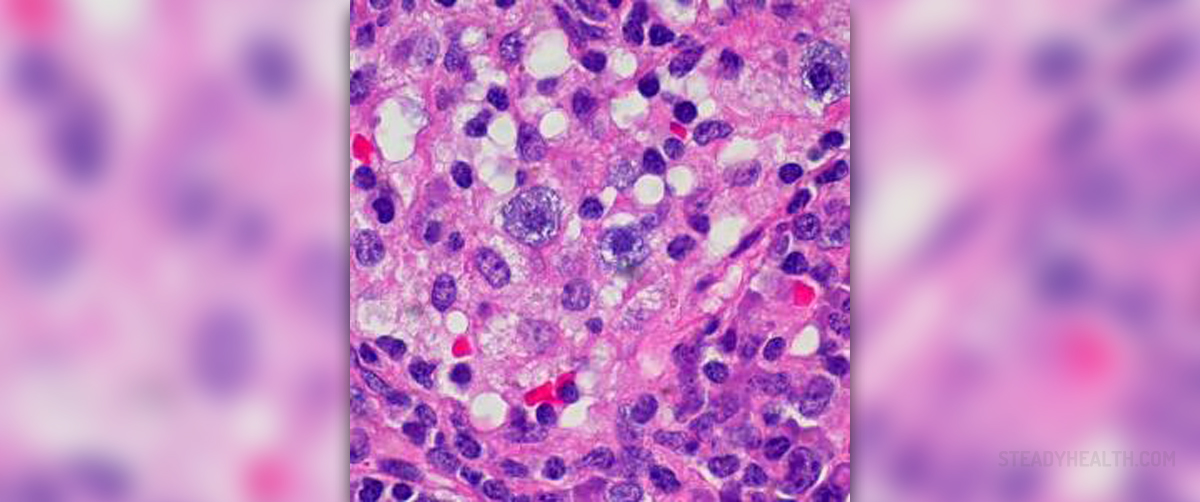
Lymphoma is a type of cancer that embarks in the lymphatic cells of the immune system and presents as a solid tumor of lymphoid cells. Causes of lymphoma are dubious. Lymphoma is always caused by DNA mutations but science has no real answer to the question what causes these mutations.
Patients suffering from lymphoma only in very rare cases have a history of family disease, thus it doesn’t seem like a genetic legacy. However, scientific studies have distinguished a number of risk factors but this is only a starting point for some future researches.
Benzene molecule
Solvents like alcohol, acetone, tolune, hylene, turpentine and benzene are very toxic and related to lymphoma. Benzene is already known to provoke leukemia but recent studies show it might affect lymphoma outbreak, as well. Benzene is a solvent made from petroleum, commonly found in gasoline, cigarette smoke, and a lot of solvents. Workers in the oil industry and plastic manufacturing are at increased risk because of the benzene exposure.
Herbicides and Pesticides
These chemicals are an occupational risk for farmers who use them for weed and pest control. People who live in agricultural areas also share the risk because of the airborne exposure to chemicals from crop dusting, as well as from the groundwater exposure. Furthermore, general population may also be at risk via intake of chemicals through-out the food supply.
2, 4, 5 - Trichlorophenoxyacetic acid
Synthetically developed acids, also known as “Agent Orange” because of the orange-striped 55 US gallons barrels used for shipping during the Vietnam War. It is important to understand that herbicides don’t enter the body only by the direct exposure, but they may also do the serious harm to human’s health through contaminated food and soil, as well as by inhalation. During the Vietnam War both soldiers and population suffered a serious damage caused by herbicide exposure. Trichlorophenoxyacetic acid in particular had hazardous effects because it remains in the soil for years causing many cancers.
Hair Dye
A link between hair dye, lymphoma and cancers is highly disputable, but there is some evidence that prove this connection, especially in the case of hair dyes produced before ‘80. Recent study conducted on 10.000 people indicates it actually may play the role in the risk of NHL, follicular lymphoma and CLL/SL. This was detected mainly amid women who started dying their hair before 1980. Further studies will examine the risk by time episodes of hair-dye use and by genetic inclination.
GeneticsSome extremely rare cases point out to genetic risk factors. However, even in these cases it isn’t clear if the genetic heritage or environmental exposure (or even a combination of these factors) causes a disease. However, some inherited immune disorders may raise one’s chance to develop lymphoma: lupus, rheumatoid arthritis, celiac disease and Sjögren's syndrome.
HIV / AIDSOccurrence of lymphoma in patients suffering from HIV/AIDS is somewhat higher than in the rest of the population. It is because of the correlation between many immune insufficiencies and lymphoma.
Epstein-Barr Virus EBV is a common member of the herpes family that can cause mononucleosis in young population. Usually, it is a harmful acute condition but in patients with immune system disorders EBV infected cells may be converted into cancerous.
Helicobacter Pylori
It is a common bacteria that causes stomach inflammations, ulcers and in some cases may lead to stomach cancer and MALT lymphoma - an uncommon type of B-cell tumor.

















Your thoughts on this
Loading...